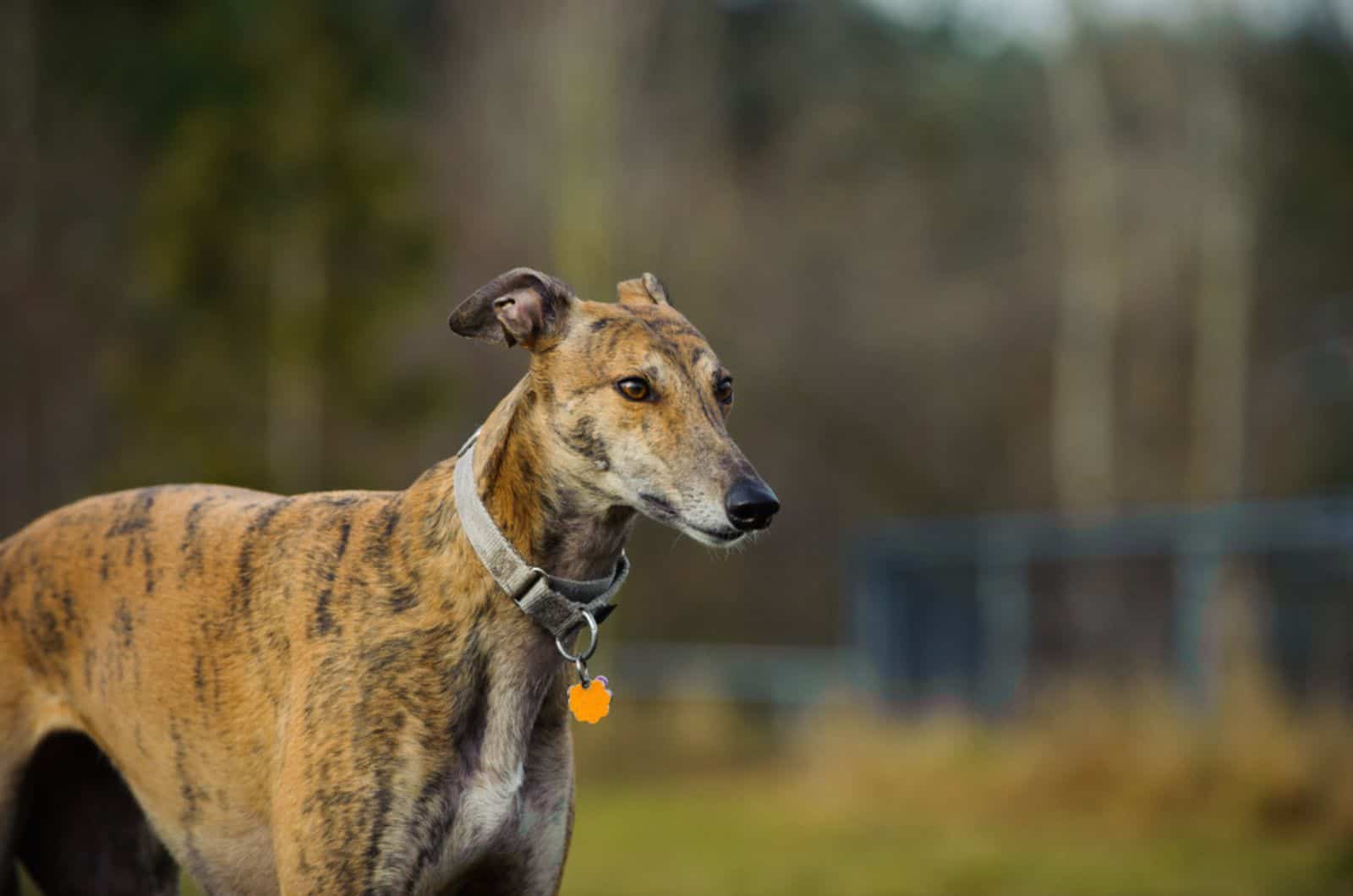Who doesn’t love Greyhounds? They are gentle, sleek, fast, intelligent, and very affectionate! What more could a dog lover want in a pet?
Well, it turns out that Greyhounds are not only pet dogs. Besides winning prizes at dog shows, Greyhounds show incredible skill in racing events. In fact, the Greyhound dog breed is so fast that it is labeled as the “Ferrari of the canine world”.
But, to achieve this title, such a fast pooch needed strong muscles and sturdy bones. That’s exactly what we are going to talk about in this Greyhound growth chart.
Aside from regular meals, a Greyhound puppy needs quite a lot of exercise and quality playtime to grow into a beautiful adult dog. Find out all there is to it in our Greyhound growth chart!
Greyhound Growth Chart Review
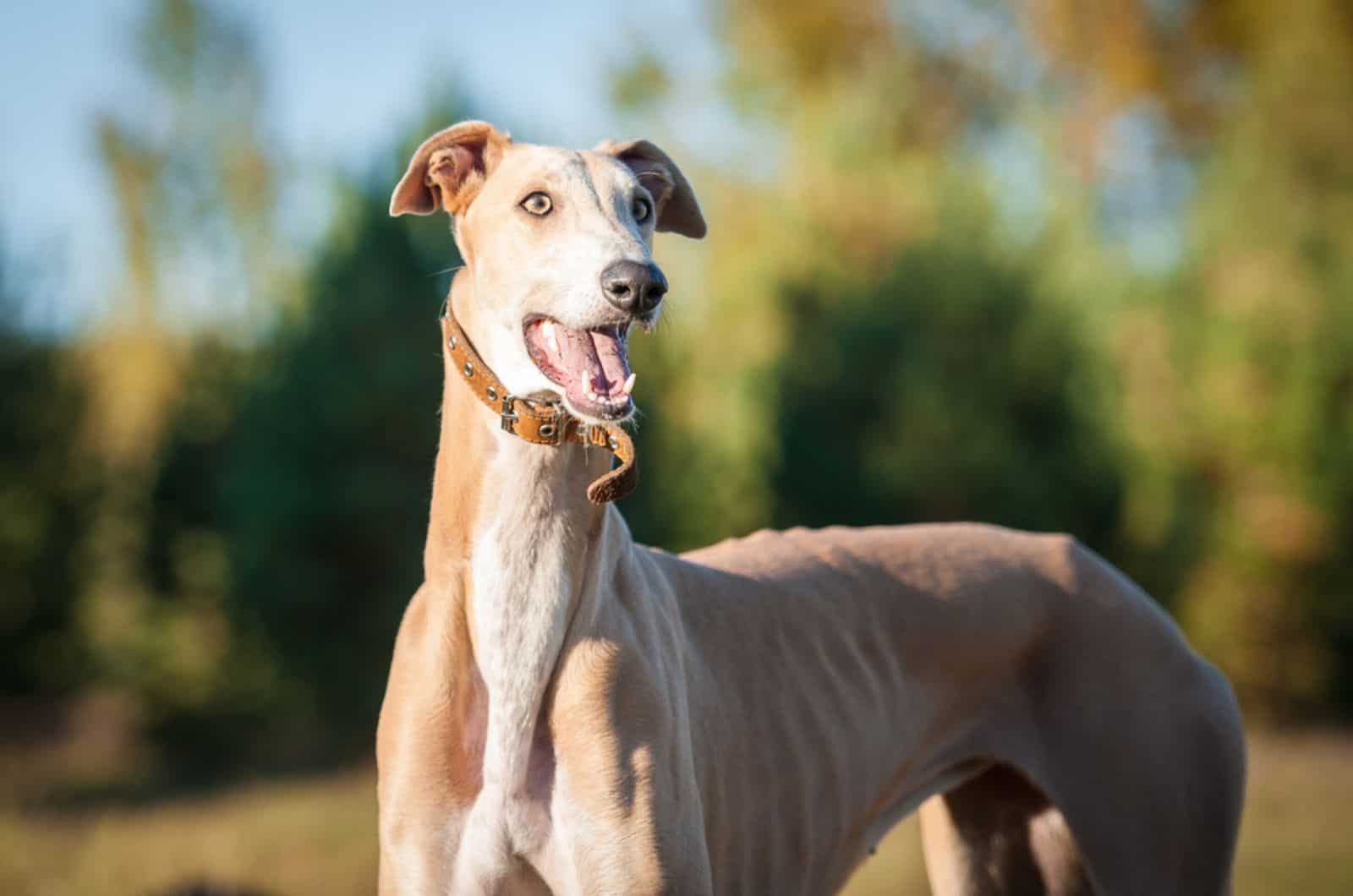
Greyhound height and weight measure rapid growth rate. These tall and skinny dogs seem to grow so fast, that Greyhound dog owners don’t even notice how small their pups were during puppyhood. It is like, you turn your head, and your Greyhound puppy is all grown up!
Reaching adult size is not all rainbows and roses, there are several health problems that lurk behind the Greyhound DNA, but we will talk about those later.
Here are the weight estimates between male and female Greyhound dogs to help determine how big these puppies will grow!
Greyhound Puppy Growth Chart
As one of the tallest dog breeds in the world, the Greyhound reaches quite a height. Its skinny and sleek legs really add to its tall appearance. But, it takes over twelve months for a Greyhound puppy to grow to its full size. Here is what I mean:
[table id=652 /]
Some Greyhound dogs don’t stop growing even after they reach 16 months of age, so we have to look at each Greyhound dog as an individual.
Not that this Greyhound weight chart only shows weight estimates. So, if you notice that your Greyhound puppy does not weigh as much as it states in this weight chart, don’t worry. Check whether or not you’re feeding it a good diet and call your vet if you feel worried.
Let’s talk about how big adult female and male Greyhounds should weigh.
Greyhound Adult Growth Chart
Both the male Greyhounds and females differ in terms of size and physical prowess. There are male and female Greyhound dogs that are genuine powerhouses, as well as males and females who are very gentle and easy to walk.
Even though male Greyhounds are bigger and sturdier than females, there are large male and female Greyhounds that are incredibly easy and enjoyable to walk, as well as small Greyhounds of both genders that are incredibly strong.
We followed the American Kennel Club’s (AKC) official Greyhound breed standards to give a height and weight estimate of these beautiful dogs.
Male Greyhound Growth Chart
In general, male Greyhounds are slightly bigger than females. At the age of 12 months, male Greyhounds typically weigh between 55 and 80 pounds. They are considered as adult dogs with a fully developed wide ribcage and long, slim legs. A show male Greyhound’s adult height is between 26 to 30 inches tall, while a racing male Greyhound is a bit shorter, 25 to 29 inches.
In addition to the differences in growth rate, male Greyhounds show a different kind of behavior from an early age. Compared to the female, the male Greyhound leaves less urine-related damage on lawns, and you don’t have to worry about your male Greyhound dog leaving a huge amount of pee on your blanket.
Greyhound males prefer to mark the higher ground and their territory’s borders, like trees for example. These may also be some of the signs that your male dog wants to mate.
A male Greyhound’s mental growth may continue even though his body may be fully developed. You can anticipate mental maturity in your male Greyhound when it is two to three years old.
It’s a common misconception that a female Greyhound will be simpler to handle because she’s a little smaller than a male, but this is rarely the case. The biggest, most composed male Greyhound may not be as challenging as the vivacious female.
Female Greyhound Growth Chart
Upon reaching full size at 12 months of age, female Greyhounds usually weigh between 55 and 70 pounds. If it is a racing female Greyhound, then you can expect her to be 25 to 28 inches tall. If the female Greyhound is bred for dog shows, you can expect her to reach up to 30 inches!
Female Greyhounds may have a lot more hormonal changes than males, especially during estrus and period cramps! This behavior may last until they are spayed. If you do not spay your female Greyhound dog then you run the risk of behavioral changes.
Unspayed female Greyhounds have the urge to mate or they may start to show nesting behavior.
Similar to male Greyhounds, even though a female Greyhound may be physically mature, her mentality may still have further growth. When your female Greyhound is around two years old, you can expect her to be mentally mature.
So before your female Greyhound reaches adulthood, you should invest in proper training. Adult female Greyhounds will still need a lot of exercise and playtime, as they had in their puppyhood.
How Big Will My Greyhound Get? Greyhound Developmental Stages
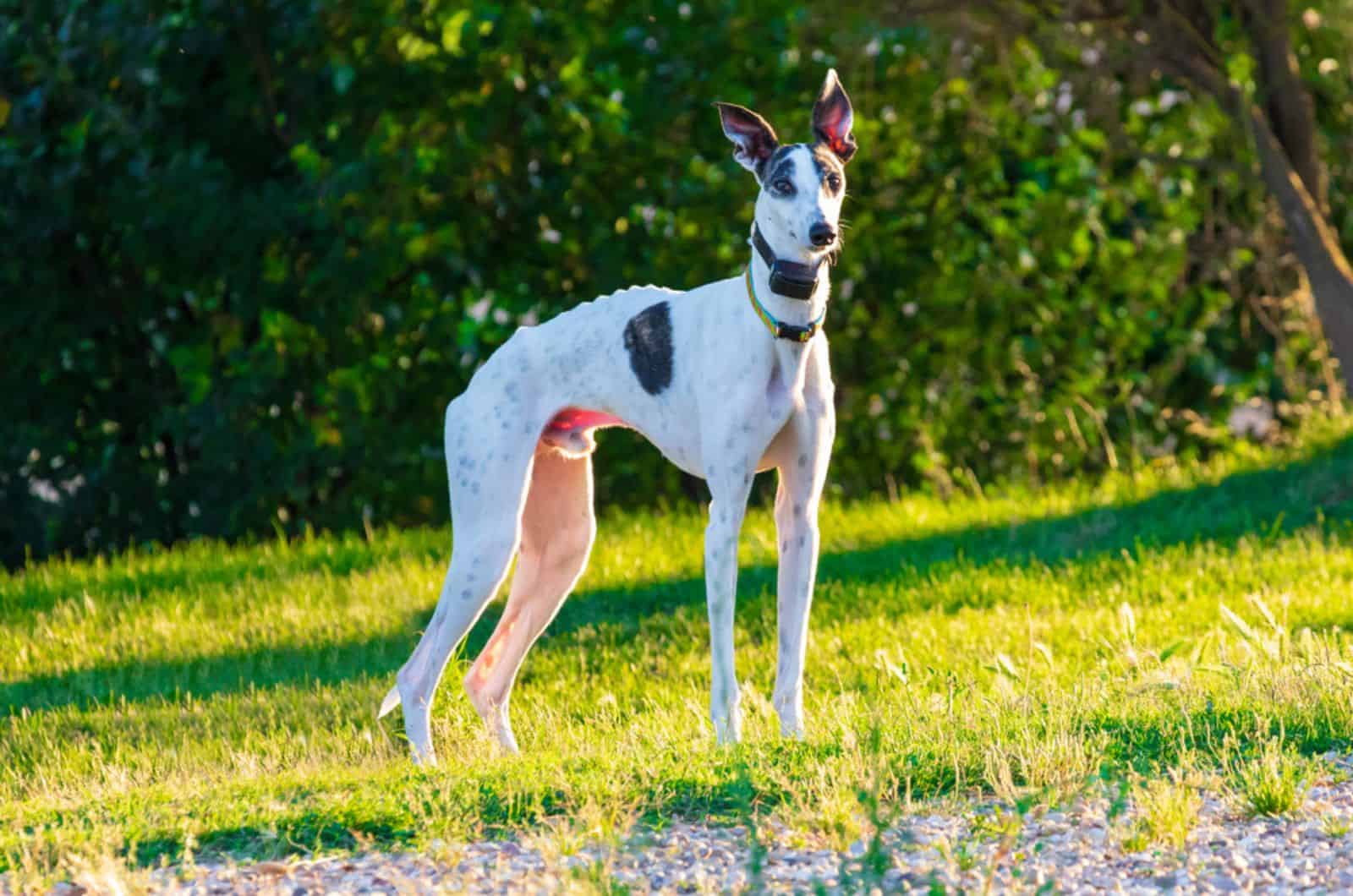
I bet that it is so exciting when you bring your new Greyhound puppy home. You are so thrilled to have your new pup by your side that you can’t wait for it to start growing.
So what happens, how much rapid growth does the Greyhound have? Do Greyhound puppies grow as fast as they run? One way to find out!
Birth To 2 Weeks
Baby Greyhounds are completely reliant on their mother while they are in the newborn stage. They get all of their nutrition from her milk, and they spend about half of their time nursing. Between 1 and 12 Greyhound puppies are typically born in a litter.
However, the number of Greyhound puppies in the litter is typically 8 on average, and it depends on the Greyhound mother dog’s age and her general health.
During this developmental stage, Greyhound puppies aren’t really experiencing their surroundings like adult dogs because their eyes are closed and their cute little ears are floppy!
3 To 12 Weeks
Prepare yourself because, for young Greyhound puppies, this is a time of many new experiences. Greyhound puppies’ senses begin to develop, allowing them to begin the socialization process as early as six weeks of age!
During this period, Greyhound puppies will be a bit mischievous — they will begin to spend more time outside of their nursing crate and they will start playing with their fellow siblings. As they grow, Greyhound puppies will gradually expand their circle, and they will be all over the place!
You can expect your Greyhound puppy to rapidly grow and go through a lot of changes. For example, weaning from its mother’s milk will be a significant developmental milestone for the Greyhound puppy, as it is about to be introduced to solid dog foods.
4 To 9 Months
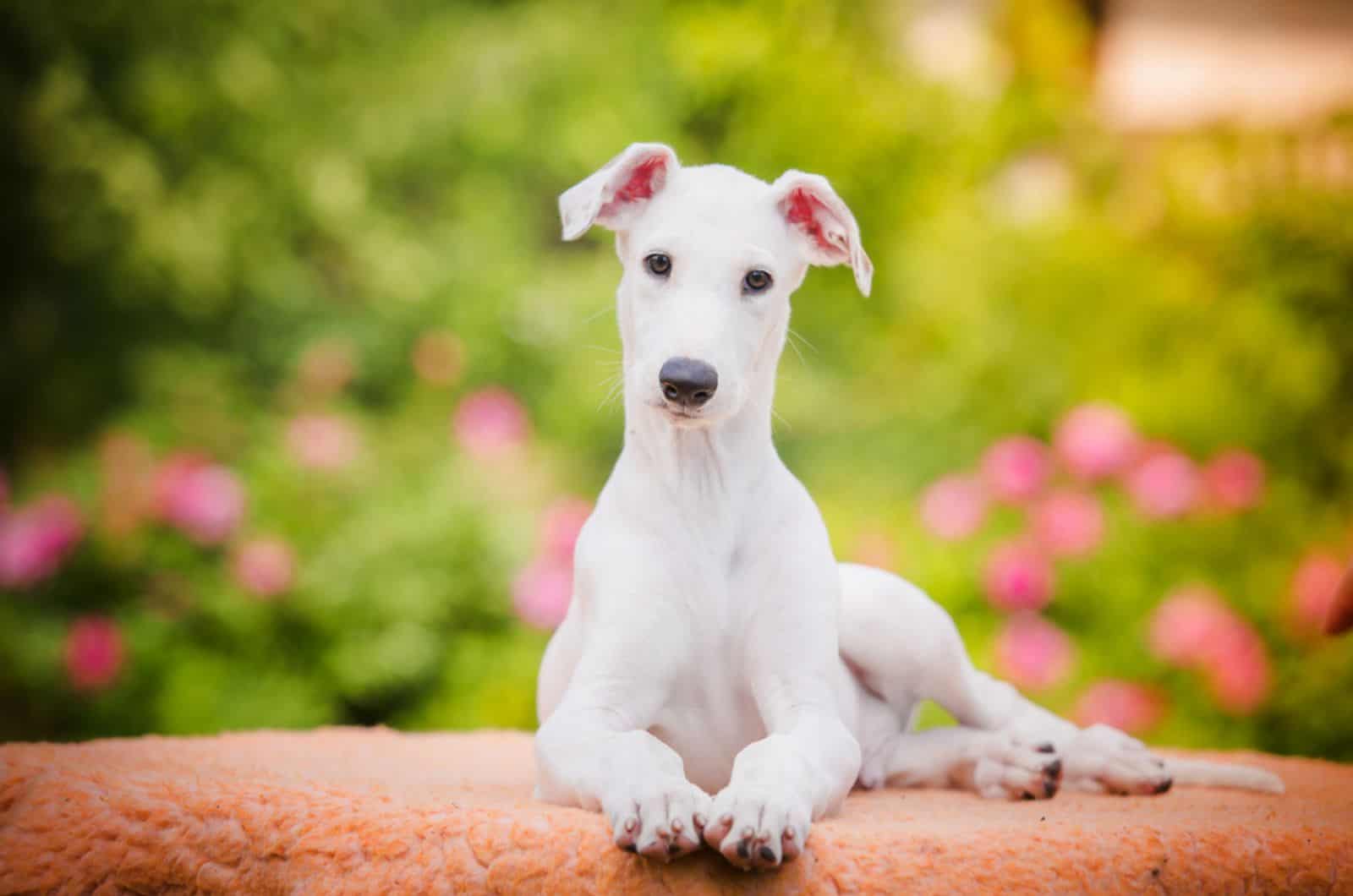
This period marks a huge change in your Greyhound puppy’s body. It is the period of rapid growth in which the Greyhound puppy is developing its strong muscles that are in need of a lot of exercise.
Following this rapid growth period, your Greyhound’s muscles and bones must be strengthened in order to support the exercise needs and energy levels.
During this time, Greyhound puppies might be a bit clumsy with their long legs which is why you will need to be extra careful and attentive. If it gets carried away with all the running and playing in the park, a Greyhound puppy can fall and seriously injure itself.
10 To 18 Months
Your Greyhound’s physical development is still ongoing and its body will develop more muscle mass between the ages of ten and eighteen months.
During this period of time, a lot of Greyhound breeders have their breeding stock undergo DNA tests against breed-specific health problems. It is when Greyhounds are considered to reach adult size. Greyhounds are usually tested against Canine Polyneuropathy and Familial Enamel Hypoplasia.
However, your Greyhound’s temperament and personality are still in development even after 18 months of age.
2 To 3 Years
At two years of age, a Greyhound dog is now an adult that should be an extremely well-behaved and gentle dog. Greyhounds are known to have a strong sense of family and they are very affectionate towards their owners (if properly socialized, of course).
Keep in mind that some Greyhound dogs may require more time to develop their personality. Greyhounds are big dogs and it is normal for them to mentally mature after they reach their adult height and weight.
Some Greyhounds may even come off as shy dogs which is a trait that is known to be in their nature. But all of them are truly gentle giants that grow to love their fellow humans.
How Long Before Greyhound Is Full Grown?
The majority of purebred Greyhounds, be they racing or pet dogs, will finish growing in a little more than a year.
Your Greyhound will continue to develop for at least 13 to 14 months, and larger Greyhounds may require up to 18 months to completely fill out their deep chests.
How Long Should A Greyhound Weight Gain Be?
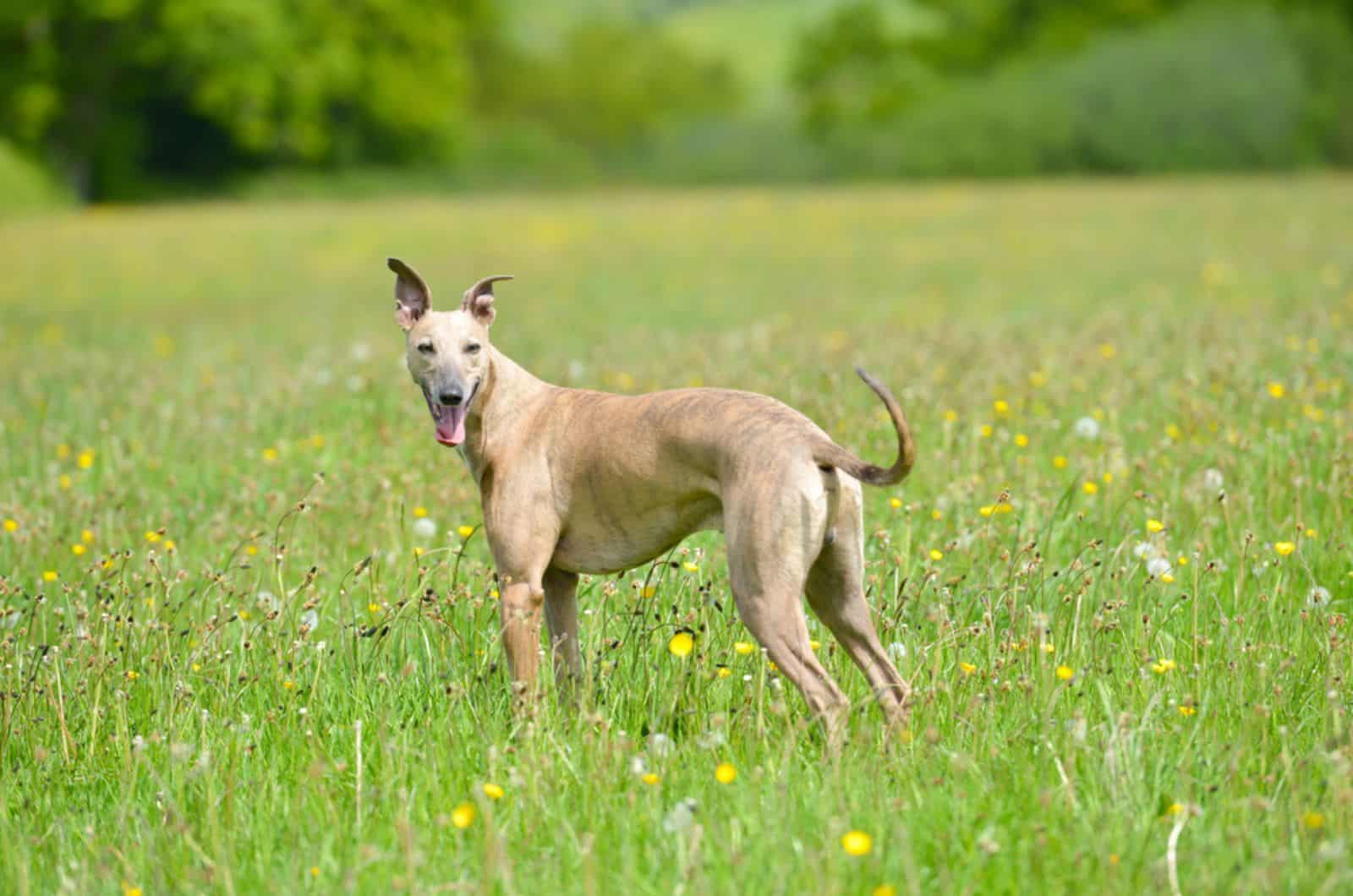
The Greyhound is a very skinny dog breed so it is understandable why you are wondering how long it takes for a puppy to gain weight.
Well, it should take anywhere between three weeks up to a month for a Greyhound puppy to gain weight. Its metabolism is pretty fast so you have to choose the right Greyhound diet so you can see results fast.
Greyhound dogs who need to put on weight should eat dog food that is high in protein and fat. You can also give your Greyhound dog raw meat and veggies.
Giving your Greyhound dog a diet rich in fat and protein will aid in their gradual weight gain. With such a well-balanced diet, you should see an increase in your Greyhound dog’s weight in just a few weeks!
Oh, and, a healthy diet and regular meals along with daily exercise will increase your Greyhound’s lifespan for sure!
Is A Greyhound Too Thin?
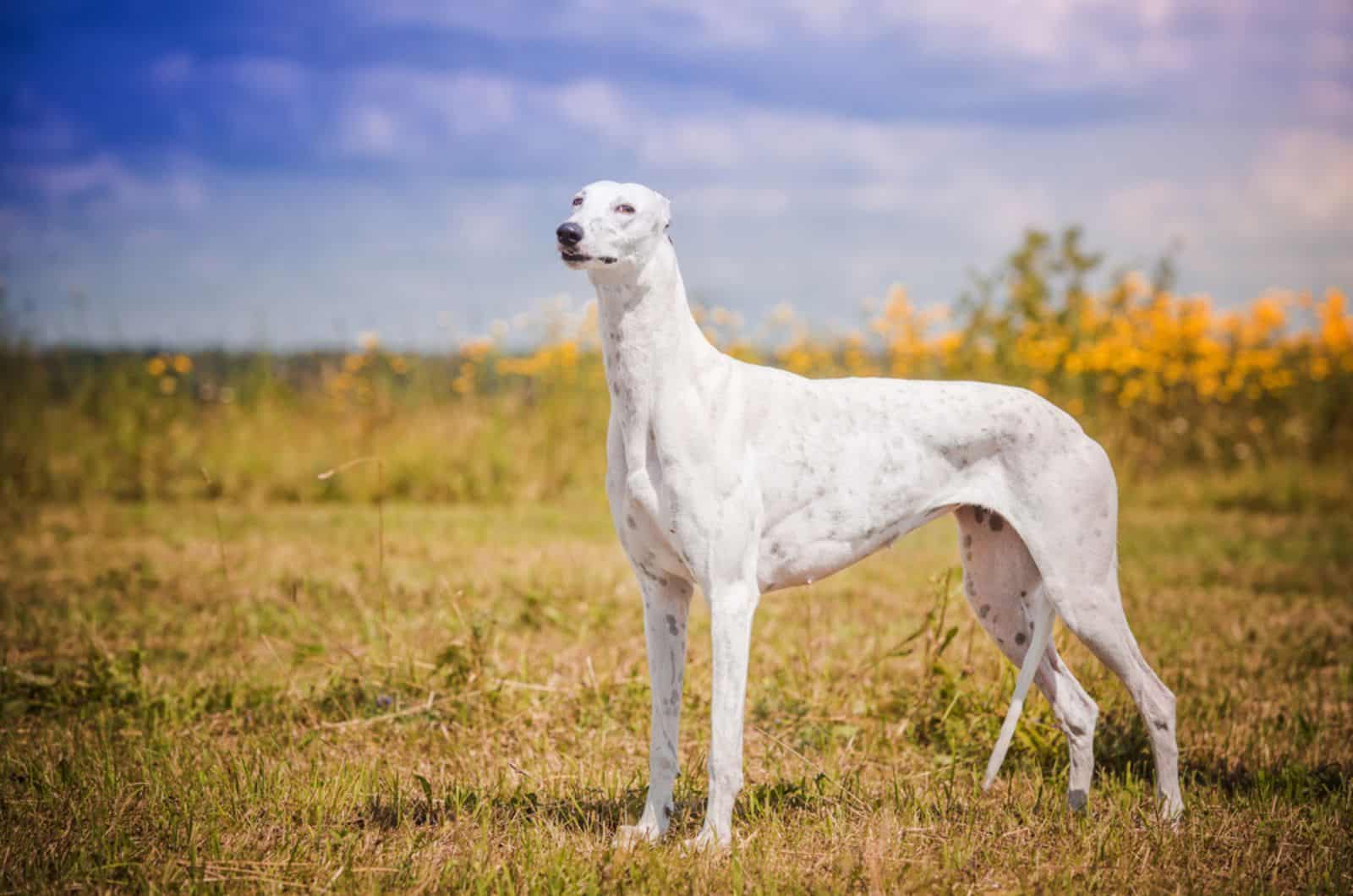
Let’s have a chit-chat about the Greyhound’s sleek and pretty thin appearance. Greyhounds are known to be skinny, it is how the breed standards describe them. But, there is a line that should not be crossed.
Most people will think your Greyhound is “healthy,” but it is not. You have to know how to differentiate a healthy Greyhound dog from an unhealthy one. And let me tell you that a Greyhound that is too thin is definitely unhealthy.
As a naturally skinny dog breed, Greyhounds are faced with a bigger problem because they are supposed to look thinner than most other dog breeds.
You should be able to see two or three pairs of ribs when weighing a Greyhound as a pet. Not just feel them, but actually, see them, and they’re not sticking out by much more than an inch.
Normally, you should be able to see three or four vertebrae running the length of the Greyhound’s spine.
Your Greyhound dog is underweight if you can clearly see its ribs when you look at its body.
Signs Your Greyhound Is Too Thin
I prepared a few signs that you can look out for if you suspect that your Greyhound is too thin.
But firstly, I want you to ask yourself whether or not you have been feeding your Greyhound puppy right. What kind of dog food you were using and how much exercise, socialization, and vet checks did your Greyhound puppy have?
Now, look out for these changes in your Greyhound dog’s appearance:
- Visible ribs: your Greyhound’s rib cage is visible enough that it makes it seem as if it is right beneath its skin. A healthy Greyhound should have some fat between the skin and ribs.
- Visible hip and shoulder bones: even though the Greyhound is a naturally skinny dog, hip and shoulder joint bones should not protrude and be noticeable.
- Visible vertebrae: no healthy dog has distinct vertebrae bones that seem to stick out of its back. You can count all vertebrae because they are very visible in an unhealthy and too-thin Greyhound dog.
- Visible bones of the tail: a Greyhound’s tail is strong and muscular. A weak and unhealthy Greyhound has visible tail bones that seem to be protruding.
- Hips and ribcage ratio is off: when you take a look at your thin Greyhound dog from above, you will notice a deep curve between its ribcage and its hips. You will also notice its spinal bones protruding which is not okay!
What Should A Healthy Greyhound Look Like?
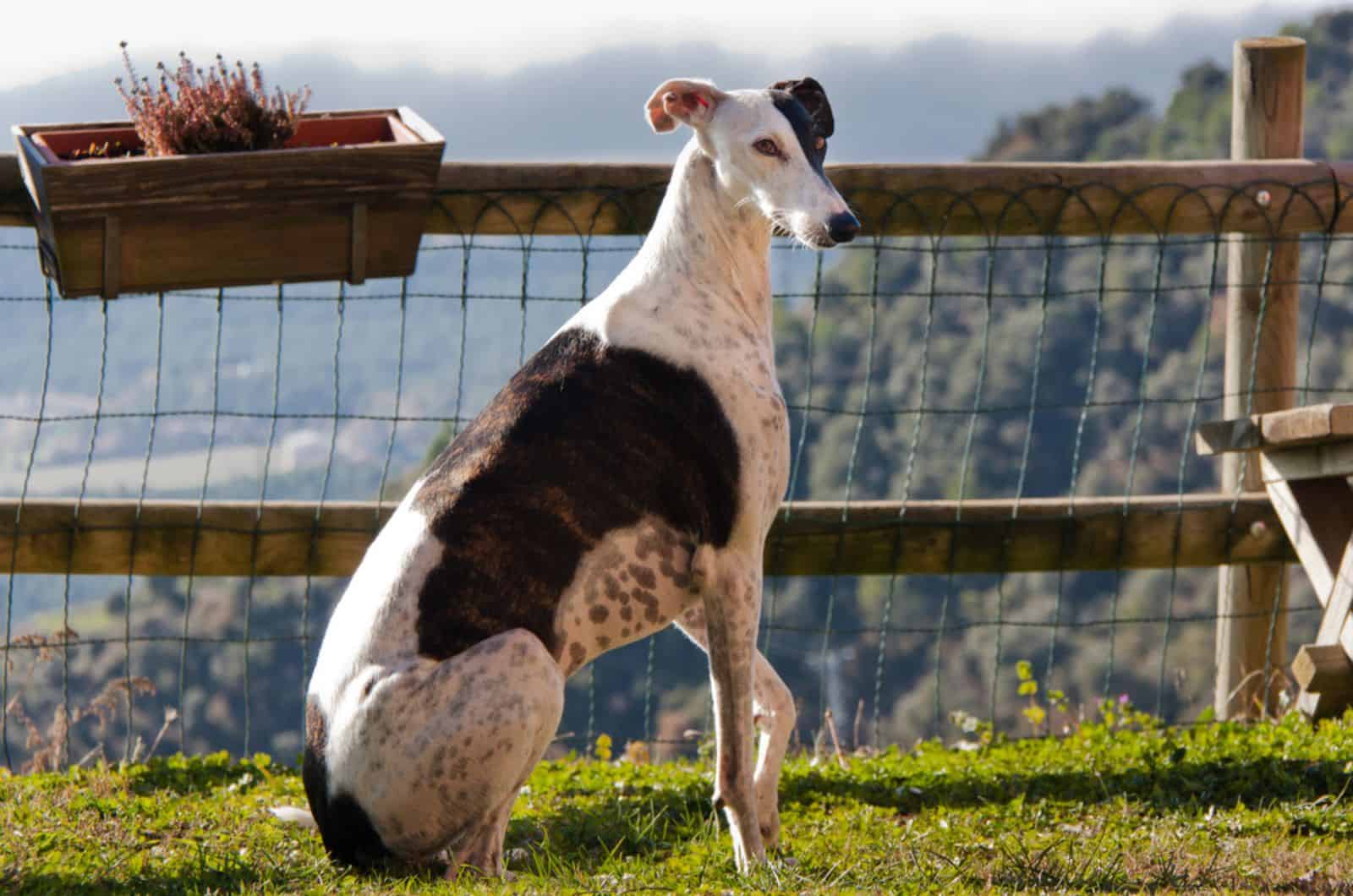
Now that we know what an unhealthy Greyhound looks like, let’s describe how a healthy one looks and behaves like.
Contrary to an unhealthy Greyhound, when a healthy Greyhound is in a sitting or lying position, it is possible to see the faint outline of two to three ribs.
Greyhounds As Race Dogs
Greyhounds that are sprinters and race dogs should have strong, visible muscles, especially on their shoulders and glutes. Three to four ribs can be visible, but a whole rib cage should not be visible. The same goes for Greyhound’s spine and hip bones — they should not protrude.
It is normal for racing Greyhounds to be a bit slimmer than pet Greyhounds because they need to be in shape all the time. Racing Greyhounds also get a lot more exercise than pet Greyhounds.
That said, a Greyhound dog’s weight is different from that of a pet Greyhound.
Greyhounds As Pet Dogs
Pet Greyhounds can chill a bit, they do not have to keep a sleek posture as much as racing Greyhounds.
As we previously mentioned, pet Greyhounds are typically in slightly better condition than their racing counterparts. However, muscle definition should be visible and even on both sides of the Greyhound.
Both racing and pet Greyhounds should have smooth and shiny skin, as well as vivid coat colors that put them right into the spotlight. Their skin should be without any scabs, rashes, dandruff or growths. Additionally, a Greyhound should not shed as much as other dog breeds.
As for their adorable eyes, a Greyhound’s eyes should be clear, without tearing, and without different colored discharges.
Why Does My Greyhound‘s Tail Wag?
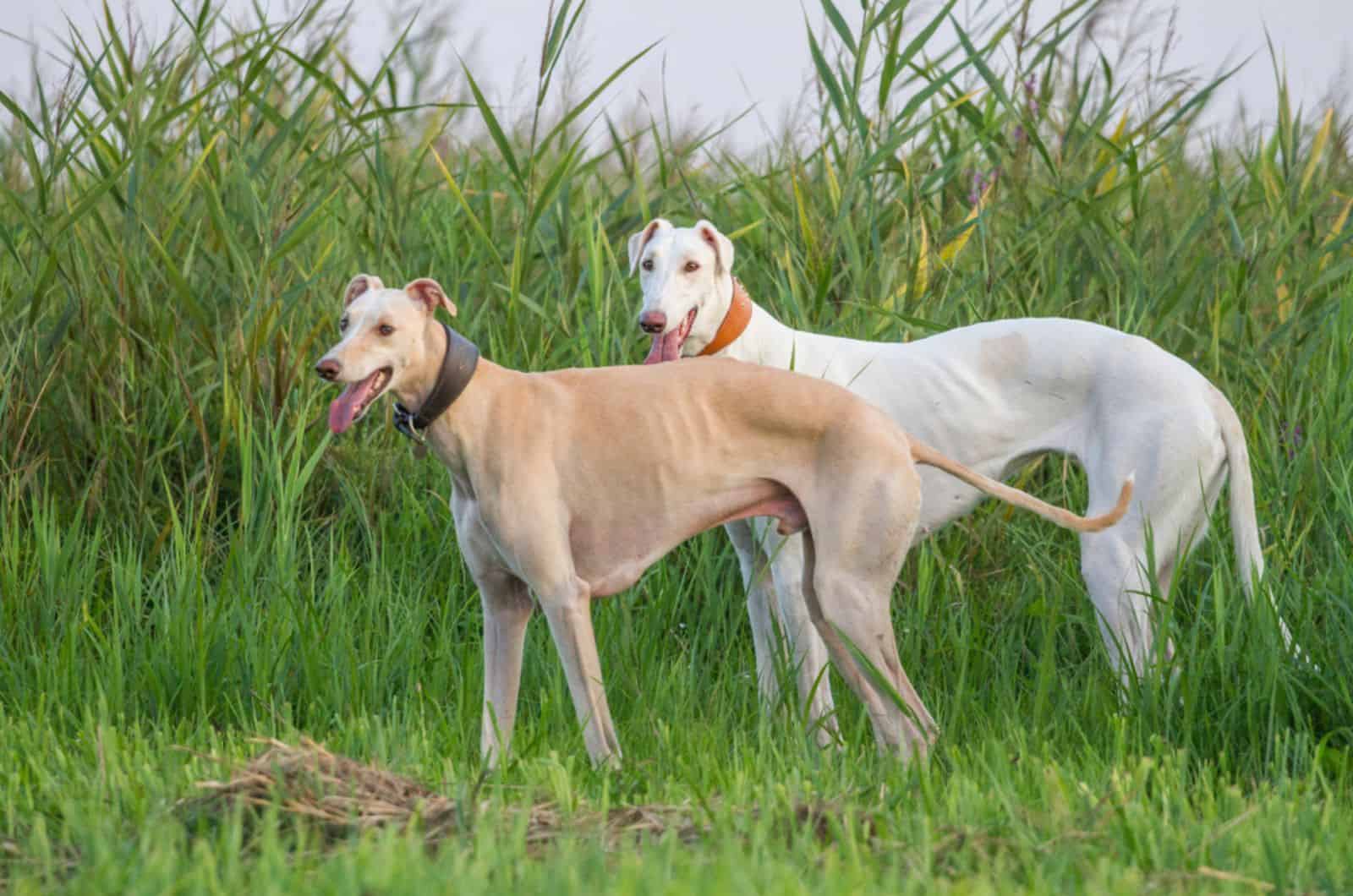
I am happy to see you, of course! Greyhounds have long and powerful tails that you simply can’t miss, they’re there! So, whenever the Greyhound’s tail changes position, everyone notices it immediately!
Like other dogs, Greyhounds wag their tails when they are feeling a certain way — happy, anxious, sad, stressed, and so on. A friendly piece of advice to all Greyhound owners and dog lovers, in general, is to never observe only the dog’s tail.
Whenever you see your Greyhound wag its tail, pay attention to its ear position, as well as its whole body position and posture.
How Much Exercise Does A Greyhound Need?
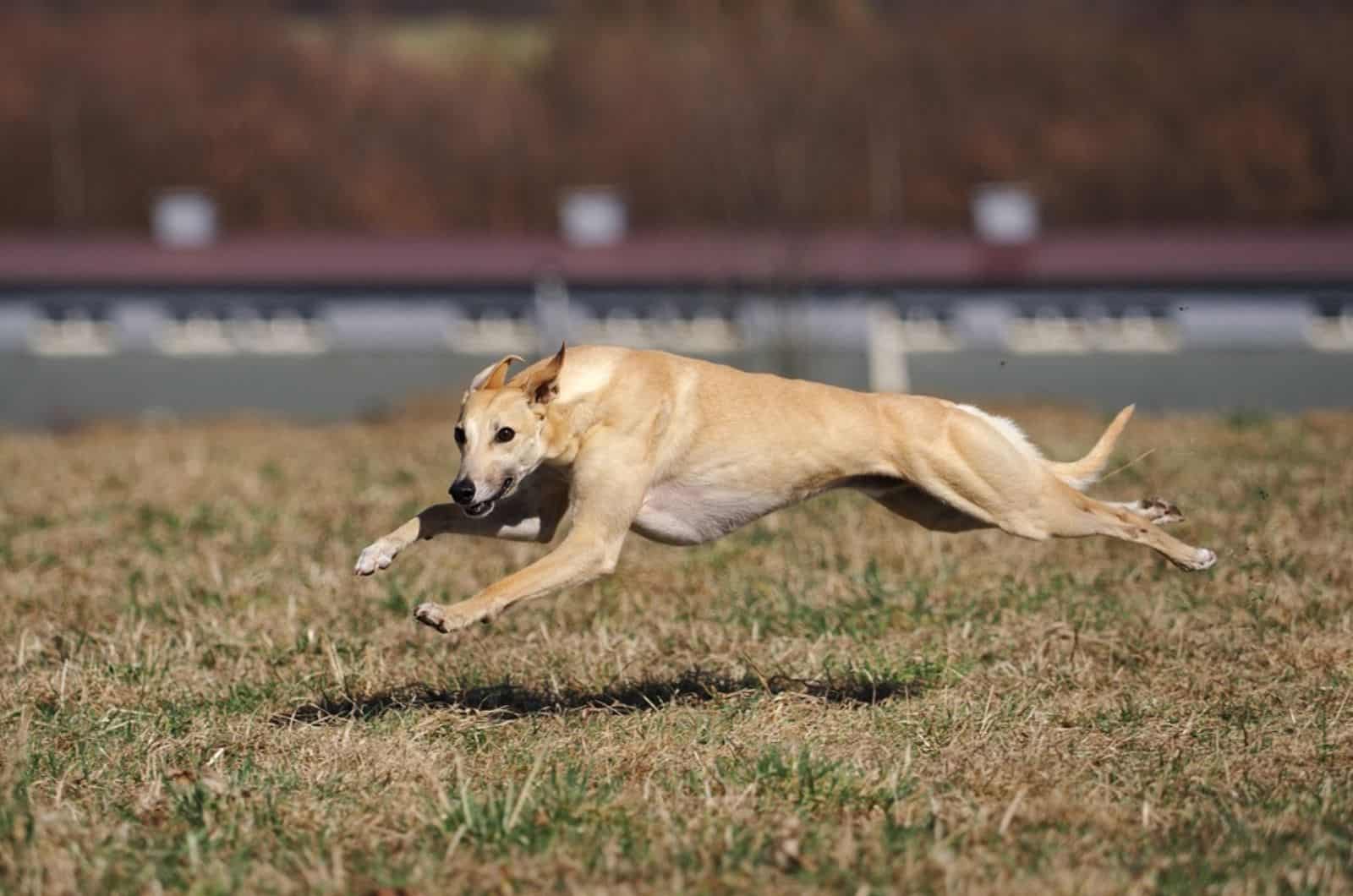
Greyhounds are sprinters rather than marathon runners. This means that most of them only need a 15-20 minute walk every day.
It is best to assess each dog as an individual because not all Greyhounds desire a lot of exercise — some of them are lazy dogs!
A daily walk of at least 30 minutes is advised, but ideally, you should go for a stroll every morning and evening. Because they are designed for speed, Greyhounds typically lack much endurance.
So, Greyhounds don’t really require long walks or a lot of exercise. If you enjoy walking, you can gradually increase your greyhound’s endurance over a few months.
Additionally, some quality playtime and training will satisfy their daily exercise requirements, as will mental stimulation. The kind of activity your Greyhound can do will also depend on its age and health status.
Final Words
Adored by Pharaohs, Alexander the Great, and Tsars, Greyhounds were the top dog breed to own. Not only were these sprinters Egypt’s favorite pooches, but their gentle personalities made rulers from all over fall in love with them!
If you are also one of the people who fell under the Greyhound’s spell, then you should definitely consider owning one of these incredible dogs.
Before you adopt or purchase a Greyhound from a reputable breeder, it is best you study the Greyhound growth chart so that you can provide this dog with the much-needed space. It would be best if you had a garden to let your Greyhound run around in.
But, for those aspiring Greyhound owners who live in small apartments, it is still possible to own this sprinter. You just have to make sure it gets a lot of exercise outside.
The Greyhound dog’s health depends on the amount of exercise it gets. It also depends on the quality of dog food you feed your new Greyhound puppy. So, keep all of that in mind!
Related Content
Things To Know About The Jack Russell Growth Chart
